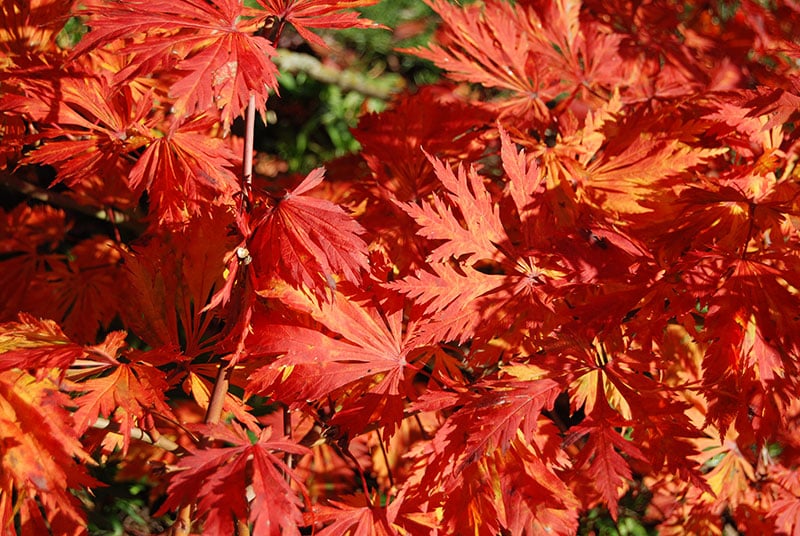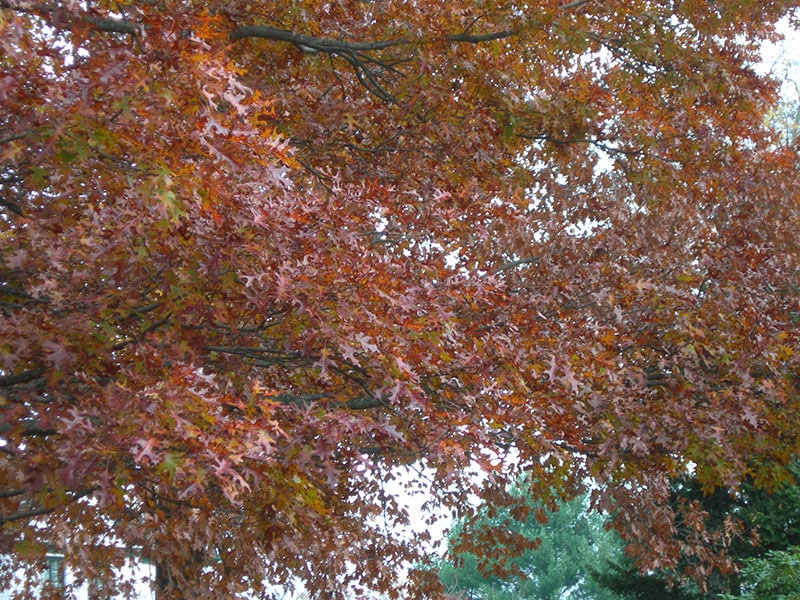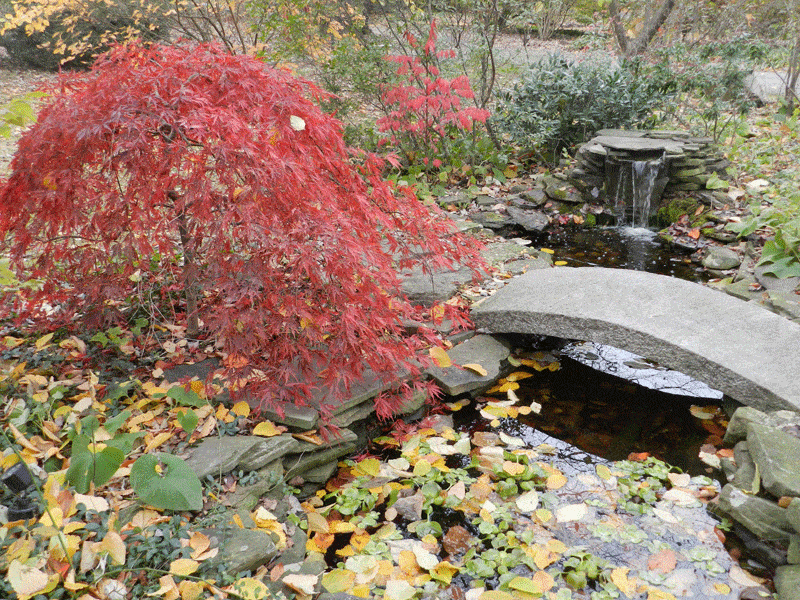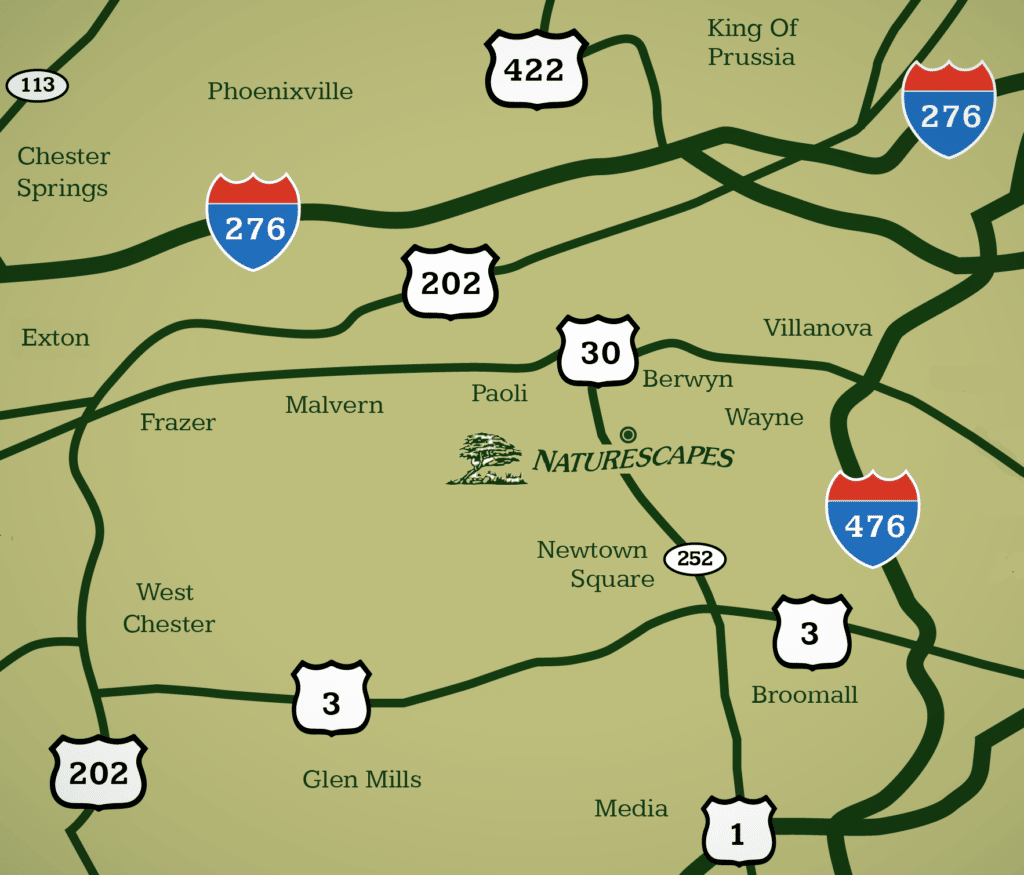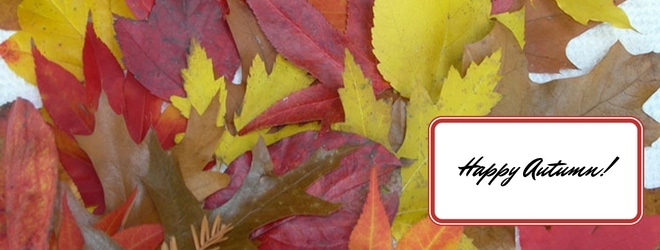
Why Do Leaves Change Color?
We, in southeastern Pennsylvania, are among the fortunate in the US to have such spectacular fall color from previously green trees and shrubs.
How does that color happen? Why only in the fall? Why not all of the growing season? There are three main reasons for our fall color: leaf pigments, length of night and weather.
From a Chemical Perspective
During the growing season (spring and summer) chlorophyll is the dominant pigment in most trees and shrubs. It reflects back to our eyes, and what we see is green. Chlorophyll is necessary for photosynthesis. Do you remember junior high school biology? 6CO2 + 6H2O yields with sunlight C6H12O 6 + 6O2. This is how the plants create their simple sugars and give off oxygen for us. Thank you, plants!
In the fall, as the nights grow longer and cooler, chlorophyll starts to die off and lets the less dominant pigments of carotenoid (oranges), anthocyanin (reds) and xanthophyll (yellows) become more visible, if only for a brief time, before they, too, die off.
How Weather Affects the Leaves
And now, let’s talk about the weather component. Warm sunny days and cool (not freezing) nights produce the most spectacular displays of color.
As the leaf veins start to close up to trap more sugars in the leaves, the less dominant pigments actually increase, especially anthocyanins (red, purple, and crimson). Another factor of the weather component is moisture (rain). When and how much rain we get during the year, whether spring arrives early or late, drought, and the combination of these factors help to determine the amount of fall color.
Time to Give Thanks
Even in an off-year, there are spectacular displays from southeastern Pennsylvania, all the way up to New England. So, as you enjoy the fall shows, take a minute and thank the plants, and not only for their obvious colors, but also for increasing oxygen, keeping us, cooler in summer, providing fruit, seeds and nuts for us, our winged and four legged friends. Plants also help to suck up CO 2 plus they provide flowers and fragrances for us and the necessary pollinators. The list of reasons to thank your plants is long.
Remember; compost those beautiful leaves, if you can. They rot down and recycle nutrients back into the soil. This is the beautiful, symbiotic interrelationship between plants and mother earth.
Is Your Garden Ready for Autumn?
Now that the seasons are changing, is your garden losing its luster? You may have forgotten to plan for all four seasons. Read more on our older post about common gardening mistakes. You’ll definitely want to hone your garden for autumn–fall gardens can be gorgeous! Check out the gallery below for highlights.
- An oak tree in fall
- Assorted autumnal foliage
